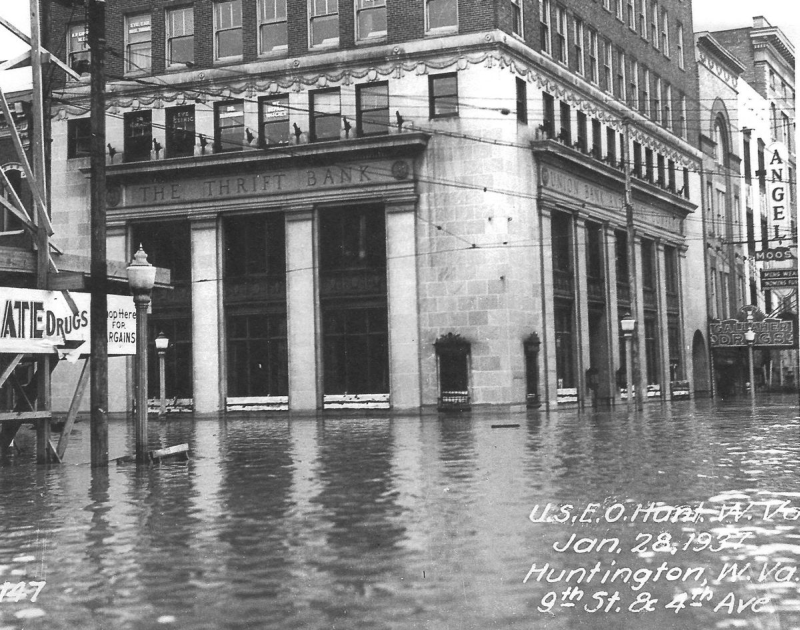
The Union Bank
------------------------------------------------------------------------------------------------------

In January 1937 a swollen Ohio River flooded much of downtown
Huntington, including the
Union Bank and Trust Building at 4th. Avenue and 9th. Street. Later that same
year the
building's first-floor bank lobby was remodeled to house a Walgreen drug store.
------------------------------------------------------------------------------------------------------
HUNTINGTON -- The first home of Huntington's Union Bank
and Trust Co. was a modest
frame building built on the northeast corner of 4th Avenue and 9th Street.
Its first building may have been small, but the bank had a big dream.
In 1923, the Union Bank installed a veteran Huntington banker,
Robert L. Archer, as president,
luring him from the old First National Bank. Starting as a bookkeeper in
1890, Archer had
successfully served First National as a teller, assistant cashier, cashier
and vice president before resigning to join the Union Bank.
Shortly thereafter, the bank moved to make its dream a reality
when it hired the Huntington architectural
firm of Meanor & Handloser to design for it an impressive new home - a
15-story building that for
many years was the tallest building in West Virginia. Today it remains the
tallest in Huntington.
The bank's old frame building was quickly demolished, and
workers began constructing the
towering new structure on the corner site. Meanwhile, the bank established
temporary
quarters at the Farr Hotel across 4th Avenue from the busy construction
site.
In a series of newspaper ads, the bank kept the public posted
on the construction of its new
home. "The First Lap Is Completed," advised an ad published Aug. 30, 1924.
"You will
miss the rat-tat-tat of the air hammers, and can put aside your fear of
red-hot rivets hurtling through the air. The steel construction
work on our new building is a finished job."
The new Union Bank and Trust Building welcomed its first
customers in 1925,
but the bank's stay there would prove to be brief. Like many other of the
nation's banks, it was forced into receivership by the Great Depression.
In 1937, the building's first-floor bank lobby was leased by
the Walgreen chain, which
remodeled it to house a drug store. The building itself was purchased by a
group
of Huntington businessman and renamed, becoming the West Virginia
Building.
-----------------------------------------------------------
Note: This Article and picture appeared in the Herald-Dispatch Newspaper on July 10, 2017.
-----------------------------------------------------------
[ Back ]